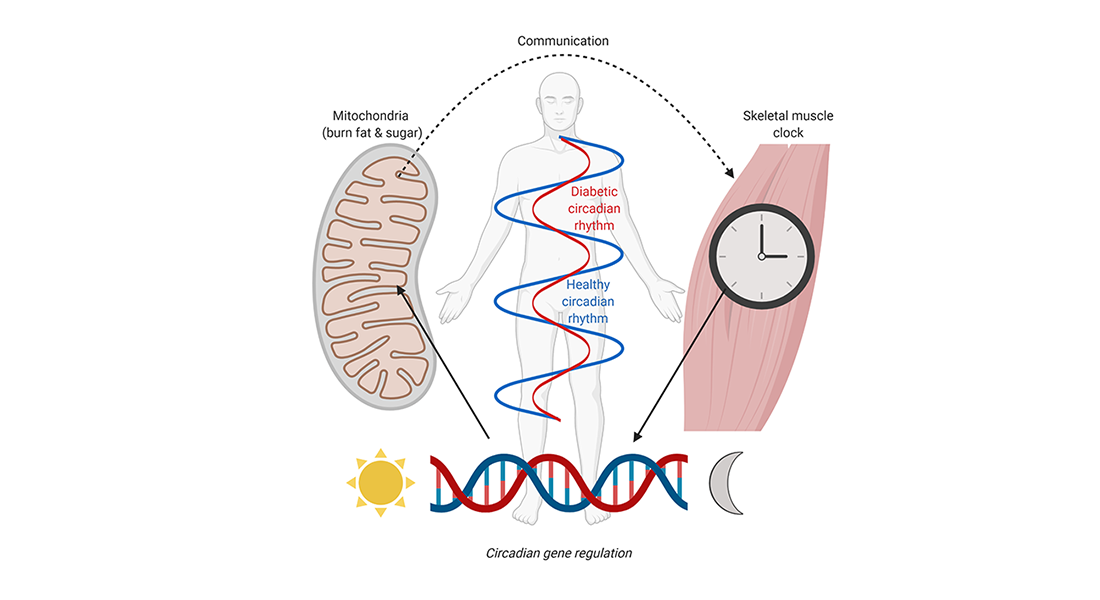A breakdown in communication – mitochondria of diabetic patients can’t keep time
Muscle cells in patients with type 2 diabetes have a disrupted biological clock discover scientists in Copenhagen and Stockholm. The findings suggest that treatments for type 2 diabetes may be more or less effective depending on the time of day they are given.

Almost all cells regulate their biological processes over a 24-hour period, otherwise called a cell’s circadian rhythm. To do so, cells use a biological clock that cycles different genes on and off throughout the day and night. Scientists already know that our metabolic health can suffer when our biological clock breaks down, due to shift work or sleep disorders, for example. However, it’s unclear how exactly the biological clock of people with type 2 diabetes differs from healthy people.
Now a team of international scientists has shown that the skeletal muscle in people with type 2 diabetes has a different circadian rhythm. They argue that this might arise because of a communication breakdown between a cell’s time-keeping molecules and mitochondria, which produce chemical energy for cells.
“The promise of this research is that it may help us to fine-tune the timing of interventions and other medications to treat type 2 diabetes, in order to optimize their effectiveness,” says Professor Juleen R. Zierath from Karolinska Institutet and the Novo Nordisk Foundation Center for Basic Metabolic Research (CBMR) at the University of Copenhagen.
A different pattern of daily gene expression
In the study, which was published in Science Advances, the scientists first obtained skeletal muscle cells from people with type 2 diabetes and measured which genes showed cycling behavior over two days and compared them with cells from similar healthy people. They discovered that cells from people with type 2 diabetes had fewer, and some different, cycling genes.
They carried out further experiments using data generated from clinical tests in people with type 2 diabetes and mice, as well as cell-based experiments. These experiments demonstrated that mitochondria communicate with the molecules that keep time in our cells, and that this communication is disrupted in people with type 2 diabetes.
Diabetes treatments may be more effective if timed to the body clock
Some of the most widely used pharmacological treatments for type 2 diabetes affect mitochondria, meaning that they may work differently depending on the time of day they are taken. As a result, these findings highlight the importance of considering cellular rhythms when prescribing treatments for type 2 diabetes.
“Exercise and diet are regularly used treatment interventions for people with type 2 diabetes, and both of these treatments can affect the time-keeping molecules and mitochondria,” says Dr. Brendan Gabriel from the Department of Physiology and Pharmacology at Karolinska Institutet.
Brendan Gabriel is first author on the paper together with Assistant Professor Ali Altintas from CBMR.
“Given that disrupted sleeping patterns are known to be associated with an increased risk of developing type 2 diabetes, our findings provide evidence of how these disruptions may link to the molecular biology within cells,” says Ali Altintas.
Read the full article in Science Advances here: Disrupted circadian oscillations in type 2 diabetes are linked to altered rhythmic mitochondrial metabolism in skeletal muscle
Contact:
Strategic Communications Officer Peter Stanners
peter.stanners@sund.ku.dk
+45 3533 4789
